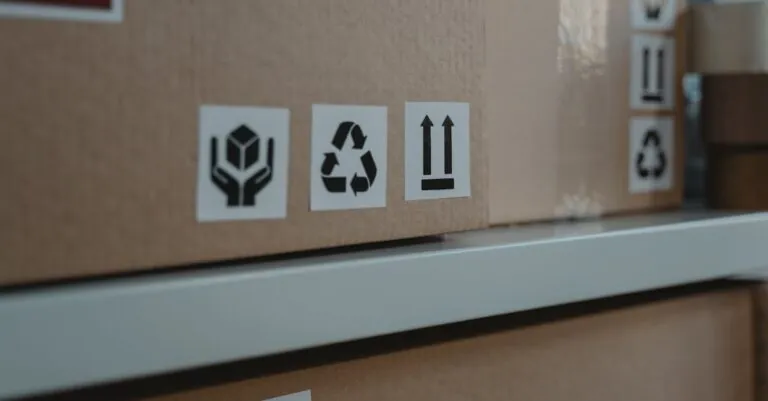Every closet has its skeletons—those forgotten items collecting dust and taking up space. From that neon fanny pack to the collection of ceramic frogs, these unused treasures could be someone else’s gold. Instead of letting them gather more dust, why not give them a second chance at life?
Table of Contents
ToggleBenefits Of Donating Unused Items
Donating unused items offers significant benefits. It positively impacts the environment and enhances social responsibility within communities.
Environmental Impact
Donating items reduces waste in landfills. Less waste means lower greenhouse gas emissions. Items that are reused or recycled decrease the demand for new products. Both recycling and repurposing promote efficient resource use. By donating, individuals contribute to a circular economy. This economy emphasizes reusing materials, which conserves energy and raw resources. Furthermore, donating extends the life of products, ultimately lessening overall environmental pollution.
Social Responsibility
Donating unused items fosters a sense of community. Local charities often rely on donations to support their programs. Many individuals benefit from access to affordable goods, which helps meet essential needs. Participating in donation drives promotes community engagement while encouraging collective support. Donating also cultivates empathy, prompting recognition of the challenges faced by others. Volunteering time or resources alongside donations strengthens connections between individuals and organizations, reinforcing a culture of giving.
Types Of Unused Items To Donate
Decluttering often reveals various unused items that can benefit others. Donating them helps raise awareness of social issues and promotes a culture of giving.
Clothing And Accessories
Clothing often accumulates, with many pieces left unworn. Focus on gently used apparel, which includes shirts, pants, coats, and shoes. Accessories like scarves, belts, and bags also find new homes through donations. Charities appreciate clothes that are clean and in good condition, as this boosts their effectiveness in helping individuals in need.
Household Goods
Kitchenware, small appliances, and furniture qualify as valuable household items for donation. Pots, pans, and dishes frequently sit unused in cabinets. Gently used furniture, such as chairs and tables, adds comfort to someone’s living space. Organizations accept these goods to support families facing hardships, creating homes filled with essential items.
Electronics
Old electronics pose a special case in donation schemes. Items like smartphones, laptops, and tablets often become outdated quickly but still hold value. Ensure they function well, as this adds usability for recipients. Many organizations refurbish electronics for schools or community programs, ensuring technology remains accessible to everyone.
How To Prepare Unused Items For Donation
Preparing unused items for donation requires thoughtful organization and cleaning to ensure they serve their new purpose effectively. Individuals can maximize their impact by following simple steps.
Sorting And Organizing
Start by gathering items from various places in the home. Individuals must assess each item’s condition and usability. Set aside items that are gently used, functional, and still in style. Create designated boxes or spaces for different categories, like clothing, electronics, and household goods. By separating items clearly, it becomes easier to manage donations later. Prioritize items that local charities specifically seek, ensuring the donations align with their needs. This process streamlines the donation experience, making it efficient and purposeful.
Cleaning And Repairing
Cleaning items enhances their appeal and ensures they are suitable for others. Dusting, wiping surfaces, and laundering clothes can make a significant difference. Individuals should repair minor damages, like stitching tears or replacing missing buttons, to improve the quality of clothing items. Test electronics to confirm they work properly before donation; this prevents disappointment for recipients. Providing a polished, well-maintained item reflects care and respect for future users. Through these efforts, donors not only enhance the item’s usability but also promote a positive perception of charitable donations.
Where To Donate Unused Items
Finding a suitable place for unused items ensures they benefit others. Various options exist that cater to specific donation needs.
Local Charities
Local charities play a crucial role in collecting donated items. Organizations like Goodwill, Salvation Army, and Habitat for Humanity accept clothing, household goods, and furniture. They distribute donations directly to families in need, making a significant impact on the community. Many charities offer convenient drop-off locations or provide pick-up services for larger items. Checking their websites or contacting them can provide information on the most sought-after items. Donating to these charities promotes social responsibility while fostering a spirit of giving.
Thrift Stores
Thrift stores offer another excellent avenue for donations. These establishments accept gently used clothing, furniture, and household items and sell them at affordable prices. The proceeds often support charitable causes or community programs, making every donation meaningful. Goodwill and local independent thrift shops are notable examples. Donors should ensure items are in good condition for resale to promote customer satisfaction. Researching the nearest thrift stores can facilitate a seamless donation process.
Online Platforms
Online platforms increasingly serve as popular donation channels. Websites like Freecycle and Facebook Marketplace allow users to connect with individuals seeking various items. Listing unused items on these platforms can help them find new homes quickly. Local buy-nothing groups on Facebook also encourage community members to give away items without expecting anything in return. Using these resources maximizes donation reach and contributes to sustainability. Engaging with these platforms fosters community connections and encourages a culture of sharing.
Donating unused items is a powerful way to declutter while making a meaningful impact on the community. By repurposing what’s no longer needed individuals contribute to a sustainable environment and support those facing hardships. Every item donated can transform lives and foster a sense of connection among community members.
Taking the time to organize and clean items ensures they’re ready for their next journey. Whether it’s clothing, household goods, or electronics, each donation carries the potential to uplift someone in need. Embracing this practice not only benefits others but also enriches one’s own life through the joy of giving.



